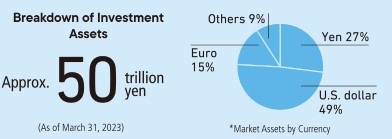Norinchukin Bank plans to sell approximately ¥10 trillion ($63 billion) in U.S. and European sovereign bonds to mitigate losses from adverse interest rate bets, according to a spokesperson for the Japanese agricultural bank.
This bond sale, representing nearly a sixth of the bank’s global portfolio, is scheduled to be completed by the end of March. The bank anticipates reporting a net loss of ¥1.5 trillion for the current fiscal year, tripling its previous estimate of ¥500 billion.

The final loss amount could vary based on the bond volume and prevailing market conditions.
Strategic shift and portfolio overhaul by Norinchukin
Chief Executive Officer Kazuto Oku announced that Norinchukin Bank would reduce its sovereign interest rate risk and diversify into assets involving corporate and individual credit risk. This strategic shift follows substantial losses from bets that interest rates in Europe and the U.S. would not stay elevated.
Unlike other major Japanese banks, such as Mitsubishi UFJ Financial Group (TYO: 8306), which have a broader revenue base, Norinchukin relies heavily on its securities portfolio, valued at almost ¥60 trillion, to generate profit.
This reliance has historically driven the bank to invest overseas, seeking higher returns beyond Japan’s negative interest rate environment.
Addressing unrealized losses and strategy shift
Norinchukin reported unrealized losses of ¥2.19 trillion on its bond portfolio in March, with bond holdings accounting for ¥31.3 trillion or about 56% of its overall portfolio.
To address these losses, the bank plans to raise ¥1.2 trillion in capital from its members. This strategy mirrors a similar move during the 2009 crisis when the bank raised ¥1.9 trillion after incurring significant losses on asset-backed securities.
The bank’s focus on the AAA-rated portions of collateralized loan obligations (CLOs) underscores its substantial role in the $1.3 trillion CLO market.
However, the current situation has led some members to question the bank’s investment approach, highlighting the broader challenges faced by financial institutions dealing with substantial paper losses on bond holdings.








